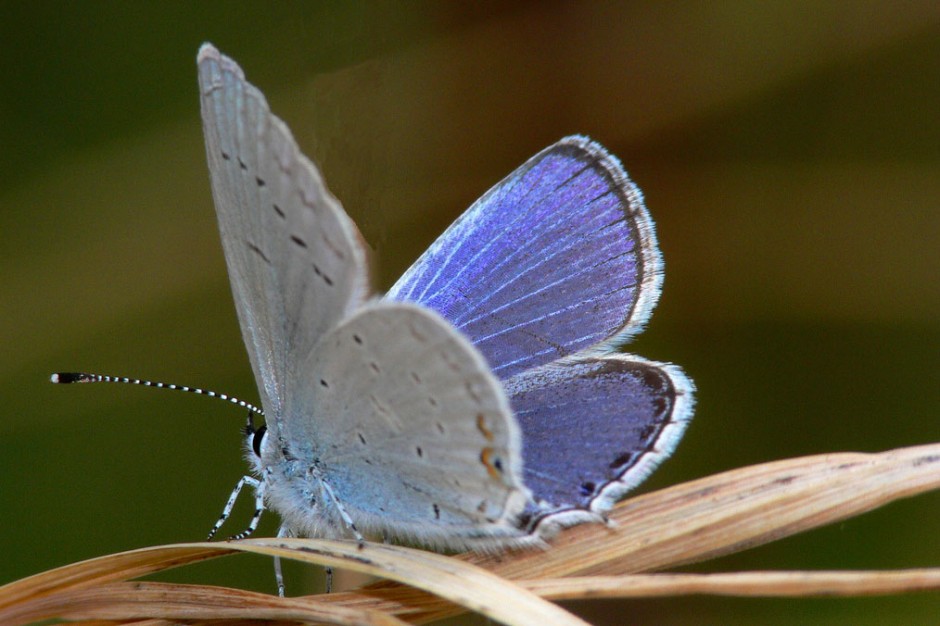In a remarkable display of symbiosis, the video below shows how nature’s systems work together.
A certain brand of “friendly ant” slurps sugar syrup excreted from the body of a Lycaenid caterpillar. When predatory ants (Fireants? Hard to say.) arrive to snatch and eat the caterpillar, the friendly ants fight them off, helping preserve the future Blue butterfly to live another day.
This amazing relationship is sometimes referred to as mutualism, whereby each participant gets something out of the deal. The caterpillar even communicates with the ants when it’s ready to excrete its sweet juices by squeaking and grunting: “Come and get it, fellas!” Of course the sound is inaudible to humans, but the ants hear it.

Two ants park at one of the sugar water secreting glands of a caterpillar. Photo via naturalhistorymag.org
Scientists believe that special glands scattered over the caterpillar give off ”chemical appeasement signals” that subdue the ants, and encourage them to view the caterpillar as an organism NOT to be preyed upon.
Then the dorsal nectary organ secretes a nectarlike substance that the ants massage, tickle and lap up. That probably feels pretty good to the caterpillar. This creates a protected situation for the caterpillar, as the ants guard their food source. Other ants have to back off, or fight for the right to tickle for juices.
Meanwhile, a pile of ants on a caterpillar also turns off flying predators like birds, since ants taste bitter to avian species.

Lycaenid butterflies benefit from “bodyguard” ants that protect them from predators. Photo via indianapublicmedia.org
Our friend Todd Stout, a butterfly enthusiast in Utah and founder of the educational and highly accessible site, Raising Butterflies, called this amazing phenom to our attention. Thanks, Todd. He mentions that if you’re ever in the hunt for caterpillars, follow the ants on host plants. They likely will lead you there.

Thanks for finally writing about > A Lesson in Symbiosis:
whats the symbiosis??????????
Mutualism
I like this!!!
i like how you included nonbinary plants in this document, Keep up the good work partner !!!! yeee haeyyy